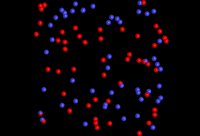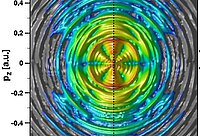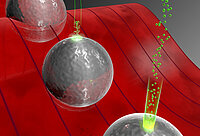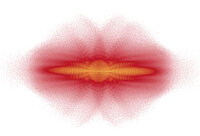Search results 401
until 410
of 5664
How fast is the electrical resistance?
 Researchers at the Max Born Institute in Berlin observed the extremely rapid development of electrical resistance in a semiconductor by tracking the movement of electrons in real time.
When you…
Researchers at the Max Born Institute in Berlin observed the extremely rapid development of electrical resistance in a semiconductor by tracking the movement of electrons in real time.
When you…
Visualization of the Kramers-Henneberger atom
 Today, laser pulses with electric fields comparable to or higher than the electrostatic forces that bind valence electrons in atoms or molecules have become routine tools with numerous applications.…
Today, laser pulses with electric fields comparable to or higher than the electrostatic forces that bind valence electrons in atoms or molecules have become routine tools with numerous applications.…
Crazy spectroscopy tricks out quantum physics
 Scientists at the Max Born Institute have developed a novel spectroscopic method that simultaneously observes the atomic composition and the spatial structure of molecules. They report on their work…
Scientists at the Max Born Institute have developed a novel spectroscopic method that simultaneously observes the atomic composition and the spatial structure of molecules. They report on their work…
Electron ping-pong in the nanoworld
 For the first time, an international research team has succeeded in controlling and observing strongly accelerated electrons on nanospheres with extremely short and intense laser pulses.
When strong…
For the first time, an international research team has succeeded in controlling and observing strongly accelerated electrons on nanospheres with extremely short and intense laser pulses.
When strong…
Wilhelm Ostwald Young Talent Award 2010
The Wilhelm Ostwald Society of Großbothen e.V., the German Bunsen Society for Physical Chemistry and the Gesellschaft Deutscher Chemiker award the 2010 Wilhelm Ostwald Young Talent Prize to Dr. Ing.…
BLiX - Leibniz Application Lab Opening
 BLiX, the Berlin Laboratory for Innovative X-ray Technologies, was inaugurated on 4 February in a ceremony at the Technical University of Berlin. BliX, is an application lab in the knowledge triangle…
BLiX, the Berlin Laboratory for Innovative X-ray Technologies, was inaugurated on 4 February in a ceremony at the Technical University of Berlin. BliX, is an application lab in the knowledge triangle…
Holography with electrons
 The Hungarian Dennis Gábor discovered the principle of holography in theoretical work in 1947, when he tried to improve the resolution of electron microscopes. However, holography first became…
The Hungarian Dennis Gábor discovered the principle of holography in theoretical work in 1947, when he tried to improve the resolution of electron microscopes. However, holography first became…
The puzzle of slow electrons
In 2009, the journal Nature Physics called it the "Ionization Surprise". So far, physicists believed that they would understand the ionization of atoms by strong laser fields well. But when they…